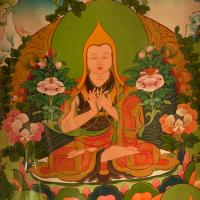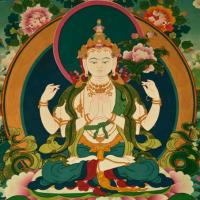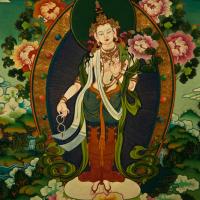Design Gallery
Thangka Painting - Mysore
Art of Tibetan Painting
by
Thangka is derived from the Tibetan word 'than' which means flat and 'ka' means painting (according to the book “Art of Tibetan Painting” referred by artisans in Bylakuppe) which is one of the traditional paintings originated from Nepalese art form exported to Tibet that is practiced in Bylakuppe as well. Thangka is a complex three-dimensional object consisting of a picture panel which is painted or embroidered on silk or cotton textile. To make a thangka painting, the painter should have precise knowledge of the measurements and proportions of each deity as established by Buddhist iconography.
For more details: http://www.dsource.in/resource/thangka-painting-mysore























